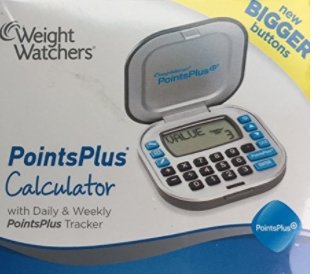Points Plus Allowance Calculation

Do you know your points plus allowance with Weight Watchers Plus method? If you are a member and opted to stay on this plan versus switching to the SmartPoints, then you need to know your allowance in order to lose weight.
In order to reach your weight loss goal you will need to stay within your daily and weekly allowance.
Many people may be in a bit of a panic with the this calculation. Most foods calculate out to a higher value than with the original plan.
Sure you have free veggies and fruits, but you still want some other foods in the mix.
Well, before you get too worried, another major change in the points plus system is the number of points allowed. Although foods points are generally higher than the old system, most people's daily allowance points are up as well.
So don't fret. You can still eat some of your favorite foods, stay within your allowance and lose weight with the Weight Watchers Points Plus system.
Total Energy Expenditure (TEE) and Adjusted TEE

The first step in the points plus allowance calculation is determining the TEE. TEE is the total energy expenditure.
This step will use your current age, weight (in kilograms) and height (in meters). There is a separate formula for men versus women.
The PA in the formula represents the Physical Activity level. For purposes of the TEE, the activity level for men is set at 1.12 and women at 1.14. The formula assumes a low activity level for all in the below formula.
TEE = 864 - (9.72 x age) + (PA x ((14.2 x wgt) + (503 x Ht))
For women, the forumla is;
TEE = 387 - (7.31 x age) + (PA x ((10.9 x wgt) + (660.7 x Ht))
Let's take an example for this first calculation. For instance, a 45 year old man weighing 245 lbs and is 5'9" tall, the first step would be to convert the lbs to kg and total inches to meters.
1 pound = 0.45359237. To simplify this we will use 0.454.
1 inch = 0.0254 meters.
So to begin this example, let's first convert the weight and height.
Weight
To convert the height to meters, you must first convert the feet to inches. To do this simply multiply 12 by the feet. Then add in the additional inches to get the total. Once you have the total, multiply it by the 0.254 to get the meters.
Height
69 x .0254 = 1.75 meters
Now that this conversion is done, we can apply the TEE formula. Remember to always complete the multiplication and division steps in a formula prior to the addition and subtraction steps. Basically, do the math in the parentheses first then finish with the simple addition and subtraction steps. For this example, the formula would be;
In the above formula, 45 is the age, 1.12 is the activity level for men, 111.23 is his weight in kg and 1.75 is the height in meters. Let's complete the formula in steps. Below is the next step, using the age, wgt and ht to complete those portions.
Now let's do the next step adding together the results of the weight and height (the piece in the parentheses).
Now we can complete the last step, remembering to do the multiplication first then the addition and subtraction pieces.
So the TEE for this example is 3181.49.
We are ready for the next formula.
Adjusted Total Energy Expenditure (ATEE) - Step 2
The above formula does not get you to the daily allowance. You need to take the results from this formula and then calculate the Adjusted
Total Energy Expenditure (ATEE). The ATEE formula is as follows;
Per the Europeon Patent Office website "The published methods assume a 10 percent conversion cost regardless of the types and amounts of nutrients consumed; consequently, TEE is adjusted by subtracting 10 percent of the calculated TEE."
Additionally, foods are given a zero energy content (our freebie veggies and fruits), however these foods do in fact contain an energy content.
So, the TEE is also adjusted for these items which generally fall within a range of 150 to 250 kilograms. For purposes of the ATEE, this amount is normalized using 200 kg.
For our example, we will use the TEE of 3181.49 as calculated in the first step. The ATEE formula for this example would be;
ATEE = 3181.49 - 318.15 + 200 = 3063.34
So this man's ATEE would be 3063.34. We are not done yet. Now it's time for the next step and the next formula.
Target and Modified Target
The next steps for the points plus allowance calculation is finding the target and the modified target. You will use the information from the previous step, Adjusted Total Energy Expenditure (ATEE).
Target - Step 3
Now we are ready to determine the target. While this step sounds like it is the last one, it's not. Remember I said this was a complicated process and this is where things get a bit fuzzy.
Before diving into the target formula, I want to mention a few things. First, like with the old points system the points plus method also has a minimum and maximum daily points plus allowance. These are 26 (min) and 71 (max).
In order for people to land within these min and max levels, there is a min and max of 1,000 and 2500 respectively in this next formula. This ensures someone does not fall outside the min and max ranges. So without further ado, here is the target formula;
So basically, what this means is that the ATEE - 1000 must fall within the min of 1000 kCal and max of 2500 kCal. So if your ATEE - 1000 is below 1000, then set it to 1000. If it is above 2500, set it to 2500. Therefore the target for someone who's ATEE is below 1000 would look like this;
Target = round (1000 / 35) or 29 daily points plus allowance. As of 1/1/2012, the minimum is now 26 pts. The new minimum is determined in the next formula steps, therefore this formula apparently stayed the same.
Note As of 1/1/2012, the min was decreased from 29 pts to 26 pts. The formula below is based on the original 29 pts minimum. However, these are the min/max as reported for the formula.
For someone outside the max range, it would look like this;
Let's take our above example and apply it to this target formula. Remember the ATEE was 3063.34. So here's how the formula would look;
Since the ATEE - 1000 is not below 1,000 or above 2,500, we do not have to worry about the min and max portion of the formula. So the target for this example would be;
For this example, the Target is 59.
As mentioned above, this is not the final daily allowance. Although you would think it would stop here, there is yet another (and even more fuzzy) component to determine a person's final daily allowance.
Modified Target - Final Step
This last formula, the modified target, is based on "Weight Watchers boards discussing the patent and identifying an additional constant offset from the patent by a value of 11 in the middle of the points range, or 7 + 4."
So the modified target for the points plus allowance, which I believe is the target daily allowance Weight Watchers calculates for you, would look like this;
Modified Target = round (((ATEE - 1000, 1000) / 35) - 4 - 7, 26),71)
If your ATEE minus 1000 is less than 1000, then use 1000. However, if your ATEE - 1000 is greater than 1000, then use the actual for this final formula. If the results are more than the 71, then you would set your allowance to the 71 max value. If your results are below 26, then you would set the minimum to the 26 points plus allowance.
For example, your ATEE was 3800, then the formula would look like this;
Using the above example, the original target formula results in 80 points. However, with the modified target formula, by taking into consideration the offset of the 11 points, the final daily target is 69.
Let's get back to our original example with the 45 year old man weighing 245 lbs and is 5'9" tall. We have determined a TEE of 3181.49, an ATEE of 3063.34 and a target of 59 points. Now let's apply this information to the modified target formula;
Remember that 3063.34 is his ATEE and since his ATEE minus a 1,000 is above the minimum level, we will just use the actual numbers and do not have to use the min of 1,000.
So for our example, his final (modified) daily allowance target is 48 points. You may be wondering why you couldn't just take the results from the target and minus it by 11 to get this modified target allowance. Well below are examples of where this would not work.
For this first example, let's assume the person's target calculated out to 36 points. If we simply use the logic of target - 11 to get the modified, then this person's new modified target would be 25 points.
Since this is below the min daily points plus allowance, then this simplified formula would not work. In this case the points would be set to 26 so as not to be below the minimum allowed.
The other example is for when the results are outside the min/max range. Let's say a person's target came out to 85 points. If we simply took this minus 11, then the modified target would be 74 which is higher than the max allowance allowed.
Use this free online Weight Watchers points plus calculator to find the values in the foods you eat. If you don't have the new points plus calculator or don't use the e-tools, then use this online Weight Watchers points allowance calculator.
Additional Articles
Points Plus for Alcohol
As you probably know, to calculate the points values for foods you use
fat, carbs, fiber and protein. But what do you use when it comes to the
spirits?
Weight Watchers Points Restaurant List
Find out the points values for the menu items at some of the most
popular restaurants. Eat out knowing you can stay within your daily and weekly allowance.
Weight Loss Chart
If you are counting calories instead of points, then check out this
downloadable spreadsheet. You can track calories consumed and exercise calories. Come complete
with charts so you can see your weight loss progress.



